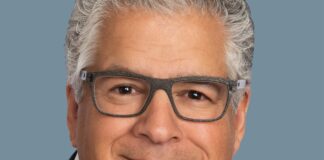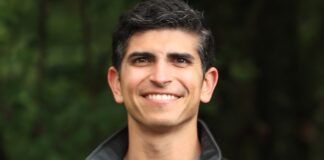Esper Bionics: Esper Hand, an AI-powered robotic hand prosthesis that moves intuitively and can be personalized to the needs of a particular user
Please introduce yourself and the startup Esper Bionics to our readers!
With pleasure! I am Anna Believantseva, co-founder and COO of Esper Bionics.
Esper Bionics is a New York-based human augmentation startup creating robotic limbs and controllers for people with limb differences. Our first products are Esper Hand, an AI-powered robotic hand prosthesis that moves intuitively and can be personalized to the needs of a particular user; Esper Control, a non-invasive brain-computer interface; and Esper Platform, a cloud-based solution to gradually improve and personalize the control of Esper Hand and other devices.
What is the vision behind Esper Bionics?
We co-founded Esper Bionics in 2019 with a clear vision that electronics inside the human body — electronic implants — is the most important technology to be developed within the next thirty years. This technology will give humans extra abilities, eliminate many diseases, and help people live longer and more fulfilling lives in a diverse world.
We believe that the prosthetics industry will become the birthplace of the tech stack necessary for the introduction of electronic implants. That’s why we are concentrating our efforts on upgrading this industry. Our first step on this journey is the development of robotic prostheses and controllers for people with upper limb differences.
From the idea to the start, what have been the biggest challenges, and how did you finance yourself?
Since the beginning, we have wanted to develop a robotic hand that would combine two important features: functionality and anatomical design. Functionality meant that our users would be able to have normal, active lives. The anatomical design meant that the prosthesis would be lifelike in a sense, mimicking the outline of a human hand. Combining these two features at the development stage has been one of the biggest challenges so far.
As for financing, we have secured funding from eight US and European investors.
Who is the target audience of Esper Bionics?
Our long-term goal is to help ten million people with upper limb differences globally. Currently, we are focused on helping amputees in the US as our first market.
How does Esper Bionics’ flagship product work? What are the advantages? What makes you different from other providers?
Esper Hand is the first-of-its-kind robotic hand prosthesis with customizable training. This means that the hand not only allows amputees to perform most everyday tasks with high dexterity, but can be tailored to the individual needs of the user, predict their behavior, move intuitively, and improve with time. Ultimately, our AI-powered prosthesis becomes a lifestyle product, a personalized gadget with adaptive control — something no other hand prosthesis can do.
Also, the hand is beautifully designed after a human hand. In June, Esper Hand won an Award: Best of the Best 2022 in Product Design from Red Dot, one of the biggest design competitions in the world, for its anatomical minimalistic design.
Esper Bionics, where does the road go? Where do you see yourself in five years?
We are planning to:ʼ
– expand in the US, followed by the EU and several other markets;
– develop smart prostheses for other parts of the arm, as well as leg prostheses and exoskeletons;
– partner with other vendors of prostheses to enhance their devices with Esper’s control system;
– create an MVP of electronic implants in cooperation with the developers of electronic implants.
Which 3 tips would you give to future founders?
Here are my three tips:
Strive to gather a strong team from the beginning — or find great advisors
Market-test your idea or concept as early as possible to have time for a pivot in case you don’t fit the market and/or users’ needs
React to market changes quickly and be ready to rapidly adjust your product to meet the customer’s needs
More information you will find here
Thank you Anna Believantseva for the Interview
Statements of the author and the interviewee do not necessarily represent the editors and the publisher opinion again.













